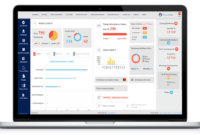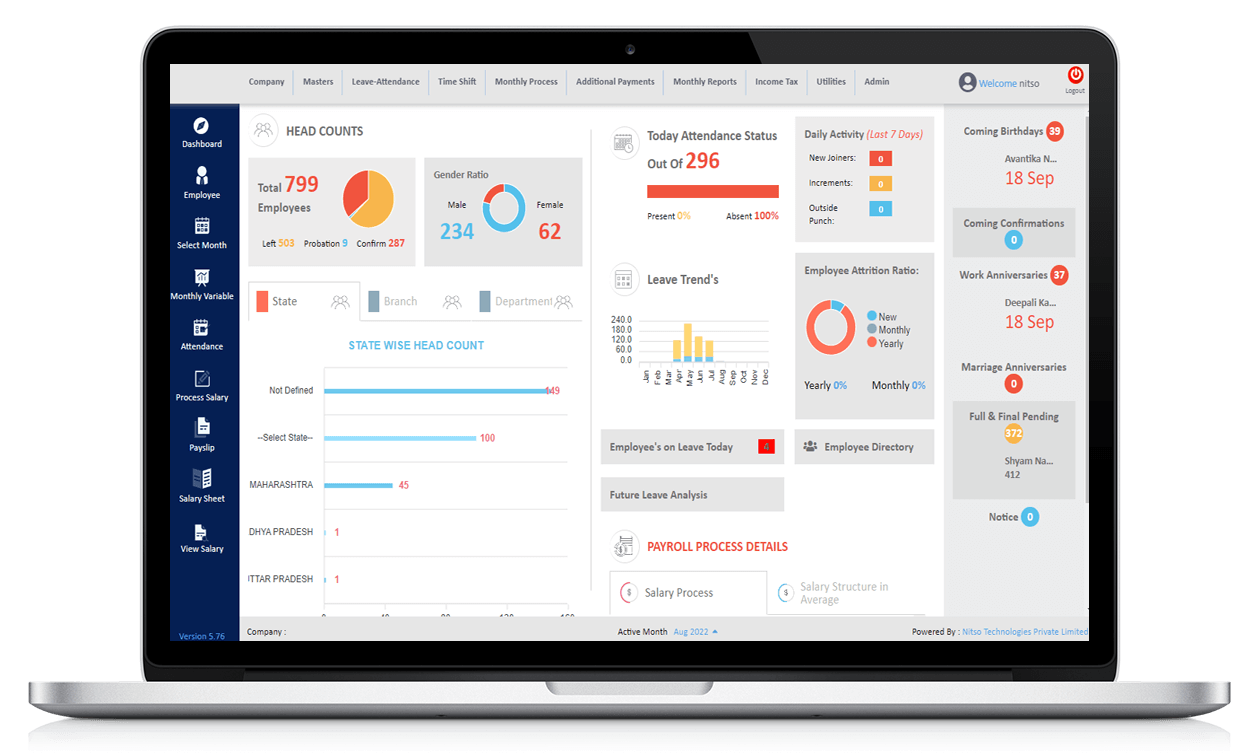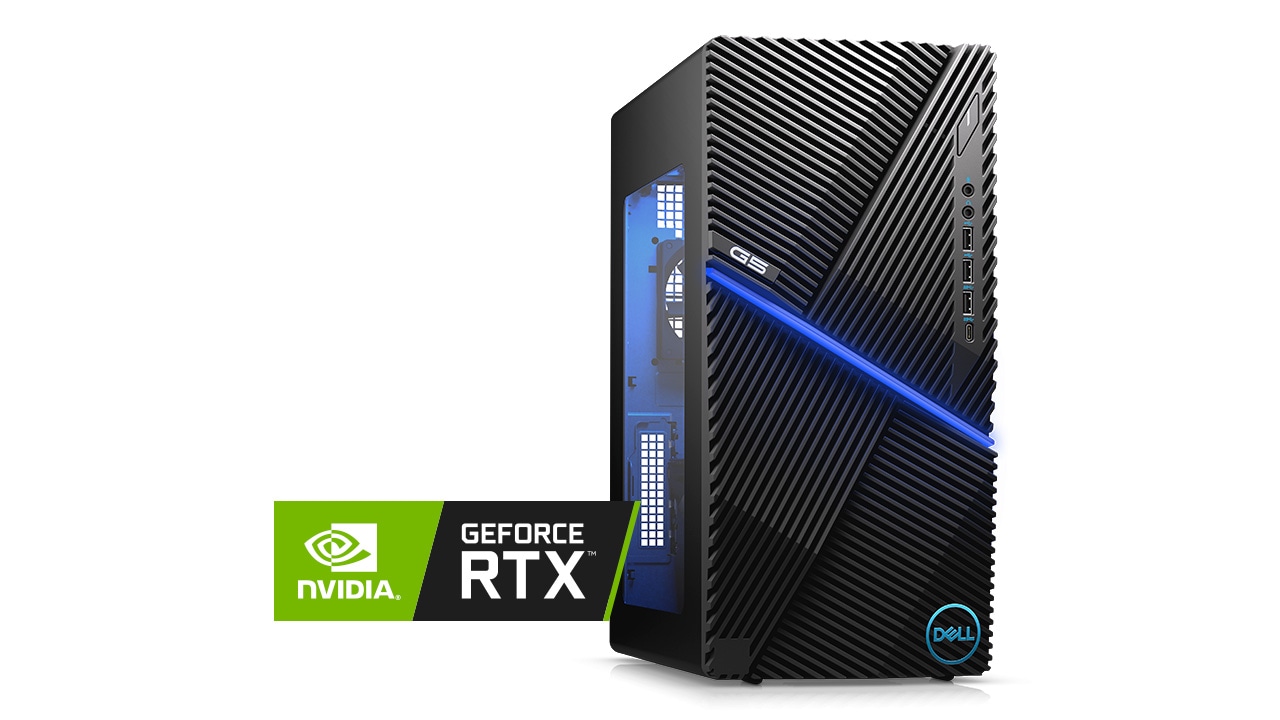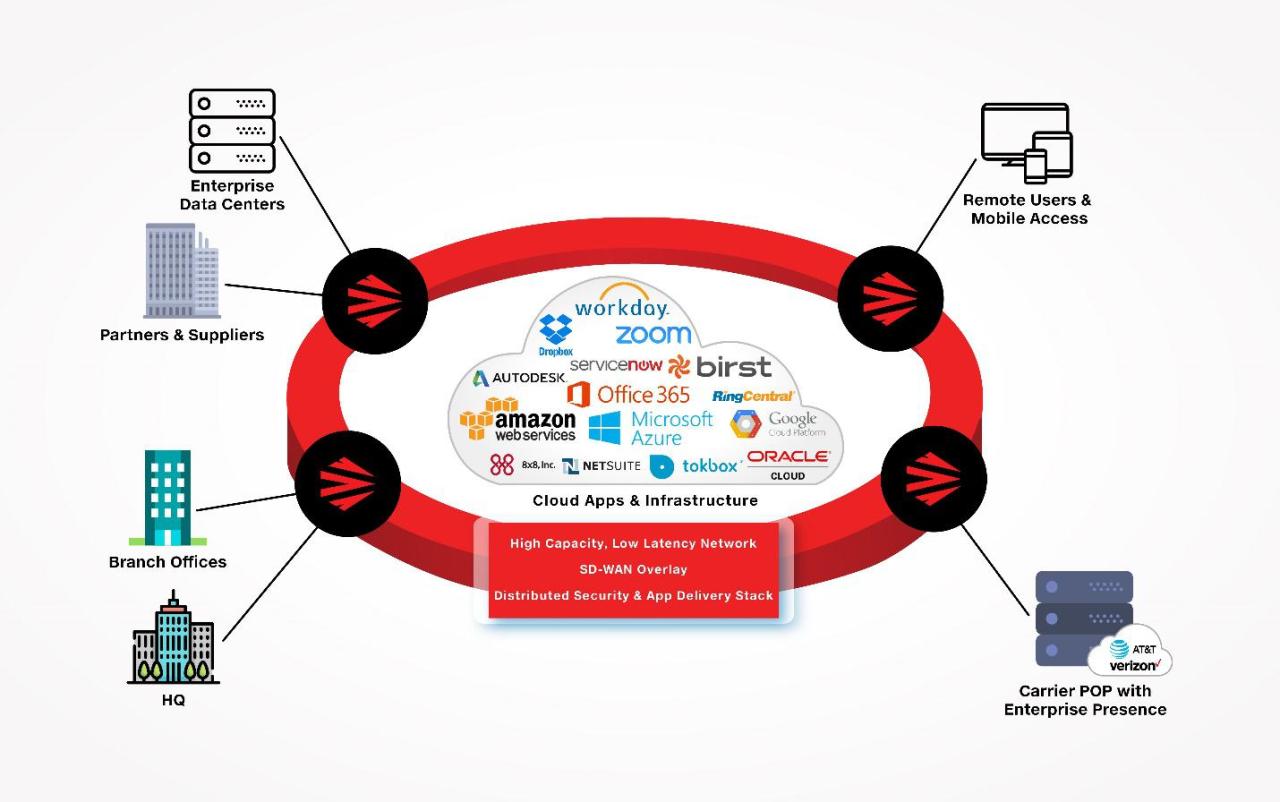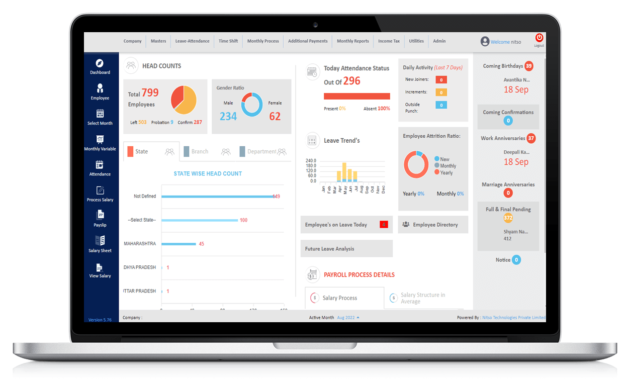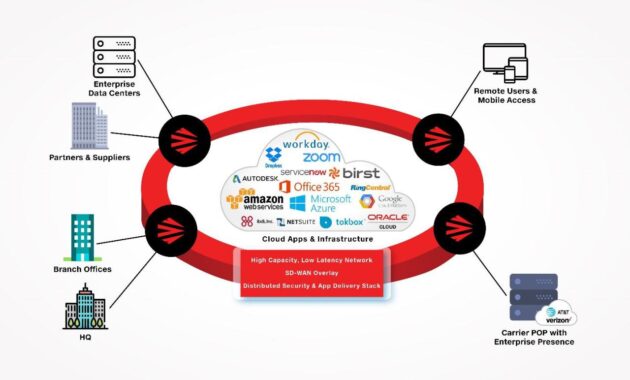Information security cloud computing is a critical topic in today’s digital landscape, where vast amounts of sensitive data are stored and processed in the cloud. As organizations increasingly rely on cloud services, understanding the nuances of information security becomes paramount. With the rapid evolution of cloud technology, security practices must adapt to address new challenges and threats effectively.
This overview will explore the significance of information security within cloud computing environments, the common security challenges faced, and the essential strategies and technologies that can safeguard data integrity and confidentiality in this complex ecosystem.
Introduction to Information Security in Cloud Computing
As organizations increasingly migrate their operations to the cloud, ensuring robust information security has become paramount. The shift to cloud computing enables businesses to leverage advanced technologies, scalability, and flexibility but also exposes them to unique security risks. Understanding the importance of information security within cloud environments is essential to safeguard sensitive data and maintain trust with stakeholders.The evolution of cloud computing has significantly transformed how organizations approach security.
Initially, cloud services were met with skepticism due to data privacy concerns and fears over data breaches. However, as cloud technology matured, so did security practices. Today, many cloud providers offer comprehensive security features, including encryption, access controls, and compliance certifications. Despite these advancements, organizations still face various security challenges, necessitating a strong focus on information security strategies.
Common Security Challenges in Cloud Computing
Organizations utilizing cloud services encounter several security challenges that can jeopardize their data integrity and confidentiality. Understanding these challenges is crucial for implementing effective security measures. Key challenges include:
- Data Breaches: Unauthorized access to sensitive information can lead to severe reputational damage and financial loss.
- Insider Threats: Employees or contractors with access to data may intentionally or unintentionally compromise security.
- Account Hijacking: Attackers can gain control over cloud accounts through phishing or credential theft, leading to unauthorized actions.
- Data Loss: Accidental deletion or corruption of data can occur, emphasizing the need for effective backup solutions.
- Compliance Violations: Organizations must comply with various regulations, and failure to do so can result in legal penalties.
Addressing these challenges requires a multi-layered security approach. Organizations must implement robust security policies, conduct regular risk assessments, and ensure continuous monitoring of cloud environments. By recognizing these vulnerabilities, businesses can take proactive steps to protect their data and maintain secure cloud operations.
“Organizations must prioritize information security in cloud computing to protect sensitive data and maintain regulatory compliance.”
Key Concepts in Information Security
In the realm of cloud computing, understanding key concepts in information security is essential for protecting sensitive data and ensuring compliance with various regulations. This involves grasping critical terms and identifying effective security measures that are specifically designed for cloud environments. Various types of data security measures play a vital role in safeguarding data stored and processed in the cloud.
These measures include access controls, authentication protocols, and data loss prevention strategies. Each of these components works together to create a robust security framework that can effectively mitigate risks associated with cloud computing.
Critical Terms in Information Security
Familiarity with essential terminology is crucial for professionals engaged in information security within cloud computing. Some key terms include:
- Confidentiality: Ensuring that sensitive information is accessible only to authorized individuals.
- Integrity: Maintaining the accuracy and consistency of data over its entire lifecycle.
- Availability: Guaranteeing that authorized users have reliable access to data and resources when needed.
- Authentication: Verifying the identity of users or systems before granting access to resources.
- Authorization: Determining whether an authenticated user has permission to access specific resources.
Understanding these terms provides a strong foundation for implementing security measures effectively.
Data Security Measures in Cloud Platforms
To protect data in cloud environments, several types of security measures are utilized. These measures help to create a secure ecosystem and reduce vulnerabilities. Here are some common data security measures:
- Access Control: This restricts user access to sensitive data based on their roles and permissions, ensuring only authorized personnel can view or modify information.
- Encryption: Transforming data into a coded format that can only be deciphered by those with the correct keys, enhancing data privacy and security.
- Data Loss Prevention (DLP): Strategies and tools designed to detect and prevent data breaches, ensuring that sensitive information is not exposed or lost.
- Audit Trails: Keeping detailed logs of user activity within the cloud environment, which helps identify security incidents and provides accountability.
By implementing these measures, organizations can significantly bolster their data security posture in the cloud.
Role of Encryption in Data Protection
Encryption plays a pivotal role in securing data within cloud computing environments. It is a process that converts plaintext into ciphertext, making data unreadable to unauthorized users. The significance of encryption can be highlighted through the following aspects:
- Data Confidentiality: By encrypting data, organizations ensure that even if unauthorized individuals gain access to the storage system, they cannot read the data without the decryption key.
- Compliance Requirements: Many regulations, such as GDPR and HIPAA, mandate the use of encryption for protecting sensitive data, ensuring that organizations adhere to legal standards.
- Data Integrity: Encryption can also help ensure that data has not been altered during transmission, as any unauthorized changes would render the data unreadable when decrypted.
- Secure Data Transfer: Encryption is essential for secure communication over the internet, safeguarding data in transit between users and cloud services.
In summary, encryption is not just a security measure; it is an integral part of a comprehensive data protection strategy in cloud computing, serving to enhance confidentiality, integrity, and compliance.
Security Protocols and Standards
In the realm of cloud computing, security protocols and standards play a critical role in safeguarding sensitive information and ensuring compliance with regulations. Organizations must adopt robust security measures to protect their data from various cyber threats while maintaining trust with customers and stakeholders. This section explores various security protocols and industry standards that inform best practices in cloud security.
Security Protocols Utilized in Cloud Computing
Cloud computing environments rely on various security protocols to protect data in transit and at rest. The following are key protocols widely adopted in cloud security:
- Transport Layer Security (TLS): TLS is a cryptographic protocol designed to provide secure communication over a computer network. It ensures privacy between communicating applications and users on the internet.
- Secure Hypertext Transfer Protocol (HTTPS): This protocol is an extension of HTTP, secured by TLS. It is commonly used to secure transactions between web browsers and servers, encrypting sensitive data exchanged over the internet.
- Internet Protocol Security (IPsec): IPsec is a suite of protocols that secures Internet Protocol (IP) communications by authenticating and encrypting each IP packet in a communication session.
- Secure Sockets Layer (SSL): Although largely replaced by TLS, SSL is still referenced as a protocol that provides a secure channel between two devices operating over the internet.
- Simple Object Access Protocol (SOAP) Security: SOAP provides a way to secure web services. It includes features such as encryption, digital signatures, and authentication to protect messages.
These protocols collectively ensure that data exchanged in the cloud remains confidential, integral, and authenticated.
Comparison of Industry Standards for Information Security
Industry standards provide frameworks that organizations can follow to establish robust information security management systems. Two of the most recognized standards are ISO 27001 and NIST SP 800-53.
| Standard | Description | Focus Areas |
|---|---|---|
| ISO 27001 | International standard for establishing, implementing, maintaining, and continually improving an information security management system (ISMS). | Risk management, security controls, compliance with legal, regulatory, and contractual requirements. |
| NIST SP 800-53 | Guidelines for selecting and specifying security controls for information systems supporting the executive branch of the U.S. federal government. | Security controls, risk assessment, continuous monitoring, privacy controls. |
Both standards emphasize the importance of a risk-based approach to security, but ISO 27001 is more focused on the management aspect, while NIST provides detailed controls applicable to various scenarios.
Implications of Compliance Regulations on Cloud Security Practices
Compliance regulations significantly impact cloud security practices, dictating how organizations must manage sensitive data. Regulations such as GDPR, HIPAA, and PCI DSS impose specific requirements that organizations must adhere to, influencing their security strategies.
- General Data Protection Regulation (GDPR): Organizations must implement appropriate technical and organizational measures to protect personal data, including encryption and pseudonymization. Non-compliance can result in hefty fines.
- Health Insurance Portability and Accountability Act (HIPAA): Entities handling protected health information (PHI) must comply with stringent security standards, including the implementation of physical, administrative, and technical safeguards.
- Payment Card Industry Data Security Standard (PCI DSS): Organizations that handle credit card transactions must adhere to specific security measures to protect cardholder data, including encryption and secure transmission.
The implications of compliance extend beyond legal obligations; they also affect customer trust and organizational reputation. Adopting best practices to meet these regulations can lead to a more secure cloud environment, fostering confidence among users and stakeholders.
Threats and Vulnerabilities
The cloud computing landscape has reshaped how organizations manage data and applications, but this shift also brings a unique set of threats and vulnerabilities. Understanding these challenges is crucial for maintaining robust information security in the cloud. This section delves into the common threats targeting cloud computing systems, the assessment methods available to identify vulnerabilities, and real-life examples of security breaches that have affected cloud services.
Common Threats Targeting Cloud Computing Systems
Cloud environments are susceptible to various threats that can compromise data integrity, confidentiality, and availability. Key threats include:
- Data Breaches: Unauthorized access to sensitive data can result from weak authentication protocols or misconfigured settings.
- DDoS Attacks: Distributed Denial of Service attacks can overwhelm cloud services, rendering them unavailable to users.
- Insider Threats: Current or former employees can exploit their access to sensitive information for malicious purposes.
- Insecure APIs: Application Programming Interfaces that lack proper security measures can be exploited, allowing attackers to manipulate cloud services.
- Account Hijacking: Cybercriminals can gain control of user accounts through phishing or credential theft, leading to unauthorized transactions and data leakage.
Vulnerability Assessment Methods Specific to Cloud Environments
Conducting vulnerability assessments in cloud environments requires specialized methodologies that take into account the multi-tenant nature of cloud services. Organizations can utilize the following methods:
- Automated Scanning: Tools can identify vulnerabilities across cloud resources by scanning for misconfigurations, outdated software, and insecure settings.
- Penetration Testing: Simulating attacks on cloud infrastructure helps uncover security weaknesses that might be exploited by malicious actors.
- Configuration Reviews: Regular audits of cloud configurations ensure compliance with security best practices and organizational policies.
- Continuous Monitoring: Implementing real-time monitoring tools can help detect anomalies or unauthorized access attempts promptly.
Examples of Recent Security Breaches in Cloud Services
Several high-profile security breaches in cloud services have highlighted the vulnerabilities inherent in these environments. Notable incidents include:
- Microsoft Exchange Server Breach (2021): A vulnerability allowed attackers to access email accounts and install malware, affecting thousands of organizations globally.
- Amazon Web Services S3 Breach (2020): Misconfigured storage buckets resulted in sensitive data exposure for numerous companies, affecting customer privacy and trust.
- Capital One Data Breach (2019): A former employee exploited a vulnerability in a misconfigured web application firewall, leading to the exposure of over 100 million customer records.
“Data breaches in cloud services underscore the importance of robust security measures and continuous vigilance.”
Risk Management Strategies

In the realm of cloud computing, risk management is a critical component that helps organizations safeguard their data and maintain operational integrity. The cloud environment introduces unique challenges, necessitating a structured approach to identify, assess, and mitigate risks effectively. A robust risk management strategy can enhance an organization’s ability to respond to threats and leverage opportunities while minimizing potential losses.
Designing a framework for assessing risks associated with cloud computing involves several key components. This framework should take into account the specific nature of the cloud environment, including data storage, processing capabilities, and the various stakeholders involved. The following points Artikel a structured approach to risk assessment in cloud computing:
Framework for Assessing Risks
The purpose of this framework is to provide a comprehensive methodology for identifying and addressing risks in cloud environments. Key components of the framework include:
- Risk Identification: Begin by cataloging potential threats, vulnerabilities, and the assets at risk. This involves understanding the cloud provider’s environment as well as the organization’s own internal systems.
- Risk Analysis: Evaluate the identified risks based on their likelihood and potential impact. This can involve qualitative assessments, quantitative modeling, or a combination of both.
- Risk Evaluation: Prioritize the risks according to their significance and the organization’s risk appetite. This helps in determining which risks require immediate attention and which can be monitored over time.
- Risk Treatment: Develop and implement strategies for mitigating identified risks. This may include transferring the risk (e.g., through insurance), avoiding the risk (e.g., by discontinuing a specific cloud service), or reducing the risk through security controls.
- Monitoring and Review: Establish ongoing monitoring mechanisms to reassess risks periodically and adjust strategies as necessary. This ensures that the risk management process remains dynamic and responsive to changes in the cloud environment.
The implementation of best practices for mitigating risks in cloud environments is essential for maintaining security and compliance. Organizations should be aware of the following strategies that can significantly reduce their exposure to risks:
Best Practices for Mitigating Risks
Implementing best practices for cloud security can help organizations stay ahead of potential threats. Some of these practices include:
- Data Encryption: Encrypt sensitive data both in transit and at rest to protect it from unauthorized access. This adds an essential layer of security, especially in shared environments.
- Access Control Management: Utilize strict identity and access management protocols to ensure that only authorized personnel can access sensitive resources.
- Regular Security Audits: Conduct regular audits to assess the effectiveness of security measures and identify areas for improvement. This proactive approach helps in maintaining compliance with relevant standards.
- Multi-factor Authentication (MFA): Implement MFA to add an extra layer of protection against unauthorized access, minimizing the risk of credential theft.
- Training and Awareness: Regularly educate employees about security policies and best practices to foster a culture of security within the organization.
Incident response planning is a vital aspect of cloud security, enabling organizations to react swiftly and effectively to security incidents. A well-defined incident response plan can significantly reduce the impact of incidents and aid in the recovery process.
Importance of Incident Response Planning
Having a robust incident response plan in place ensures that organizations are equipped to handle security breaches or other incidents with minimal disruption. Key elements of an effective incident response plan include:
- Preparation: Develop a clear framework that defines roles, responsibilities, and procedures for responding to incidents. This includes ensuring that all team members are trained and aware of their duties.
- Detection and Analysis: Establish mechanisms for identifying and analyzing incidents as they arise. This can involve the use of monitoring tools to detect anomalies and gathering data to assess the situation.
- Containment and Eradication: Implement strategies to contain the incident, preventing further damage, and eradicating the threat from the environment.
- Recovery: Plan for recovery procedures that ensure systems can be restored to normal operation swiftly. This includes data restoration and validation processes.
- Post-Incident Review: Conduct comprehensive reviews after incidents to identify lessons learned and opportunities for improving future incident response efforts.
In conclusion, proactive risk management strategies, including a well-structured assessment framework, best practices for risk mitigation, and a clear incident response plan, form the backbone of a secure cloud computing environment. Implementing these strategies helps organizations navigate the complexities of cloud security while maintaining the integrity and confidentiality of their data.
Tools and Technologies for Cloud Security: Information Security Cloud Computing
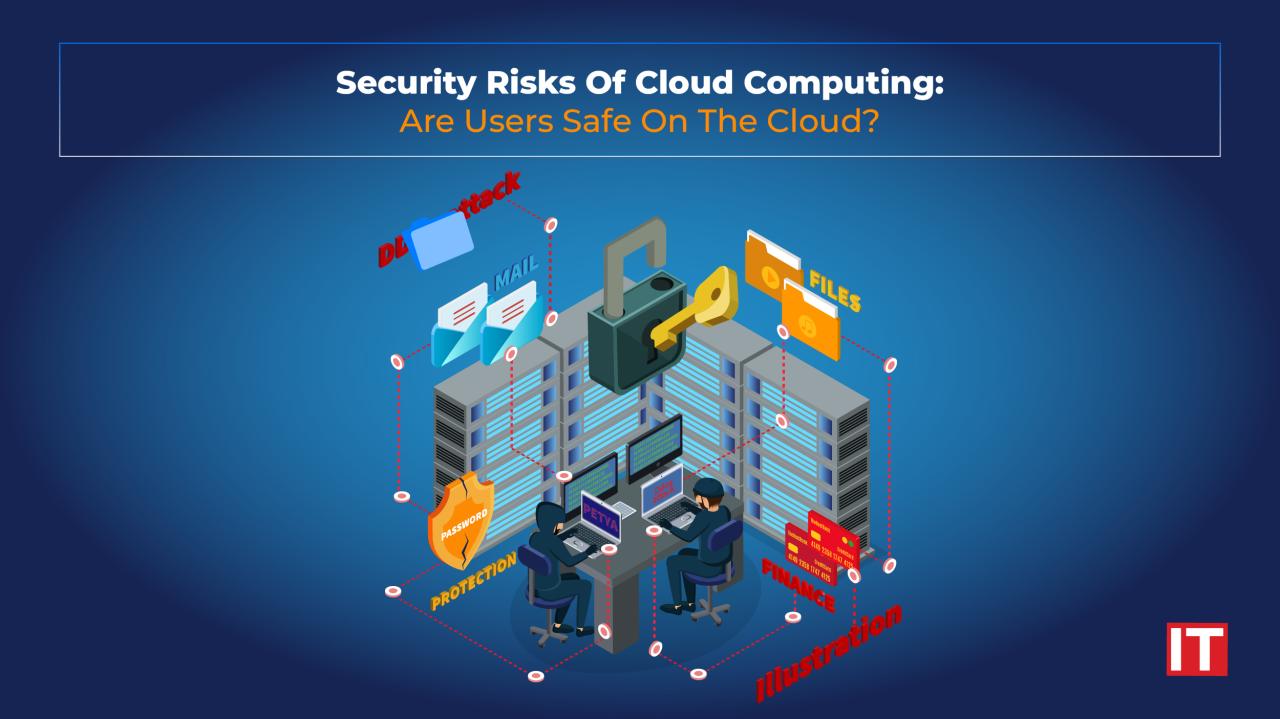
Cloud security is a critical aspect of modern computing, especially as organizations increasingly shift their operations to the cloud. A variety of tools and technologies are employed to safeguard sensitive data and ensure compliance with regulations. This section explores some of the most popular solutions that enhance cloud security, discussing their functionalities and importance in creating a robust security posture.
Overview of Popular Tools and Technologies, Information security cloud computing
The landscape of cloud security tools is vast and varied, each serving specific security needs. Commonly utilized technologies comprise firewalls, intrusion detection systems (IDS), and virtual private networks (VPNs). These tools collectively work to mitigate risks and protect cloud environments from unauthorized access and vulnerabilities.
Role of Firewalls, Intrusion Detection Systems, and Virtual Private Networks
Firewalls act as barriers between trusted internal networks and untrusted external networks, controlling incoming and outgoing traffic based on predetermined security rules. They are essential for protecting cloud assets by blocking malicious traffic. Intrusion Detection Systems, on the other hand, continuously monitor network traffic for suspicious activities. They alert administrators to potential threats, allowing for prompt action. Virtual Private Networks create secure communication channels over the internet, encrypting data in transit to protect it from interception.The combination of these technologies enhances the overall security framework of cloud services and contributes to the defense-in-depth strategy, which is vital for comprehensive protection.
Comparison of Cloud Security Solutions from Leading Vendors
When considering cloud security solutions, organizations often evaluate options from various leading vendors. Below is a comparison of notable cloud security tools and platforms that are recognized for their effectiveness:
| Vendor | Product | Key Features | Compliance |
|---|---|---|---|
| AWS | AWS Shield | DDOS protection, threat intelligence | PCI DSS, HIPAA |
| Microsoft | Microsoft Defender for Cloud | Security posture management, built-in threat detection | ISO 27001, GDPR |
| Google Cloud Security | Data loss prevention, encryption | FERPA, HIPAA |
Each vendor’s solution offers a unique blend of features tailored to different organizational needs. The evaluation of these security tools is essential to ensure that they align with specific compliance requirements and security objectives.
“Choosing the right cloud security tools is pivotal in establishing a strong defense against increasingly sophisticated cyber threats.”
The Role of Governance in Cloud Security
Governance in cloud security is a critical framework that helps organizations manage and safeguard their data and resources in cloud environments. Establishing a robust governance structure is essential for ensuring that security protocols are effectively implemented, compliance requirements are met, and risks are properly managed. By doing so, organizations can maintain trust with stakeholders and meet regulatory obligations.Governance frameworks provide a structured approach to managing cloud security by delineating roles, responsibilities, and processes.
These frameworks are instrumental in guiding organizations through the complexities of cloud security, ensuring that stakeholders understand their roles in maintaining compliance and security.
Importance of Governance Frameworks
The implementation of governance frameworks in cloud security is vital for several reasons, including:
- Standardization: Governance frameworks promote consistency and standardization across various cloud services, ensuring that security measures are uniformly applied.
- Accountability: Clearly defined roles and responsibilities help in holding stakeholders accountable for their actions related to cloud security.
- Risk Mitigation: Effective governance enables organizations to identify and mitigate risks associated with cloud computing environments, thereby reducing potential vulnerabilities.
- Compliance Assurance: Governance frameworks help organizations ensure compliance with industry regulations and standards, reducing the risk of legal penalties.
Responsibilities of Stakeholders
In a cloud security governance framework, all stakeholders play a crucial role in ensuring compliance and security. Responsibilities are typically distributed among:
- Executive Management: Setting the vision and overall strategy for cloud security governance and ensuring adequate resources are allocated.
- IT Security Teams: Implementing security controls, monitoring systems, and responding to incidents to maintain security integrity.
- Compliance Officers: Ensuring adherence to regulatory requirements and conducting audits to verify compliance.
- End Users: Following established security protocols and reporting any security incidents or concerns.
Continuous Monitoring and Auditing
Continuous monitoring and auditing are fundamental practices in maintaining cloud security. The dynamic nature of cloud environments necessitates ongoing oversight to promptly identify and address potential threats. Key aspects of continuous monitoring and auditing include:
- Real-time Threat Detection: Automated tools can monitor cloud environments in real-time to identify suspicious activities or anomalies.
- Regular Compliance Audits: Conducting frequent audits to ensure that security policies and procedures align with compliance requirements.
- Incident Response: Having a structured incident response plan in place that can be activated as soon as a threat is detected.
- Risk Assessment Updates: Periodically reevaluating risks to adapt to emerging threats and changing business needs.
Future Trends in Information Security and Cloud Computing

The landscape of information security in cloud computing is continually evolving, driven by advancements in technology and the ever-changing nature of cyber threats. As organizations increasingly migrate to cloud environments, understanding the future trends in this field is crucial for maintaining robust security postures. Emerging technologies such as artificial intelligence (AI) and machine learning (ML) are reshaping how security is implemented and managed, while new threats and vulnerabilities are surfacing in response to these changes.
Emerging Technologies Impacting Cloud Security
AI and machine learning are becoming pivotal in enhancing cloud security measures. These technologies enable more sophisticated threat detection and response mechanisms, allowing organizations to predict and mitigate potential breaches before they occur. For instance, AI algorithms can analyze vast amounts of data to identify unusual patterns or behaviors that may indicate a security incident, significantly reducing response times.Additionally, automation driven by AI can streamline security operations, minimizing human error and ensuring consistent enforcement of security policies.
Machine learning models are also being utilized for anomaly detection, helping to protect against insider threats and zero-day vulnerabilities. Overall, the integration of AI and ML into cloud security strategies facilitates a proactive approach to defending against evolving cyber threats.
Potential Future Threats to Information Security
As the technology landscape evolves, so too do the threats associated with cloud environments. Future threats may include more sophisticated phishing attacks, ransomware targeting cloud services, and advanced persistent threats (APTs) that exploit vulnerabilities in cloud architectures. The adoption of multi-cloud environments can also introduce complexities that attackers may exploit, leading to potential data breaches and loss of sensitive information.Organizations must remain vigilant and adapt their security measures to address these emerging risks.
For example, the rise of quantum computing poses a significant challenge, potentially rendering current encryption methods obsolete. As a result, organizations will need to invest in quantum-resistant security solutions to safeguard their data in the long term.
Evolution of Security Practices in Response to Changing Cloud Landscapes
The shift towards cloud computing has necessitated a transformation in security practices. Organizations are increasingly adopting a shared responsibility model, recognizing that security is a collective effort between cloud service providers and users. This has led to a greater emphasis on compliance frameworks and standards that help ensure data protection across cloud environments.Furthermore, security practices are evolving to incorporate zero trust architectures, where no entity is trusted by default, regardless of its location within or outside the network perimeter.
This paradigm shift encourages continuous verification and monitoring of users and devices, mitigating risks associated with unauthorized access.In addition, multi-layered security strategies are becoming standard, integrating various technologies such as firewalls, intrusion detection systems, and encryption to provide comprehensive protection against a diverse array of threats. Organizations that embrace these evolving security practices will be better equipped to navigate the complexities of the cloud and protect their sensitive information effectively.
FAQ Insights
What is the main benefit of cloud security?
The main benefit of cloud security is the ability to protect sensitive data while leveraging the scalability and flexibility of cloud services.
How can encryption enhance cloud security?
Encryption enhances cloud security by ensuring that data is unreadable to unauthorized users, protecting it both at rest and in transit.
Are cloud security standards mandatory?
While not all cloud security standards are mandatory, compliance with relevant standards can help organizations manage risk and demonstrate due diligence.
What common threats do cloud environments face?
Common threats include data breaches, insider threats, and denial-of-service attacks, which can compromise the security of cloud systems.
How often should organizations assess their cloud security?
Organizations should conduct regular assessments of their cloud security, ideally at least annually, to adapt to new vulnerabilities and threats.

